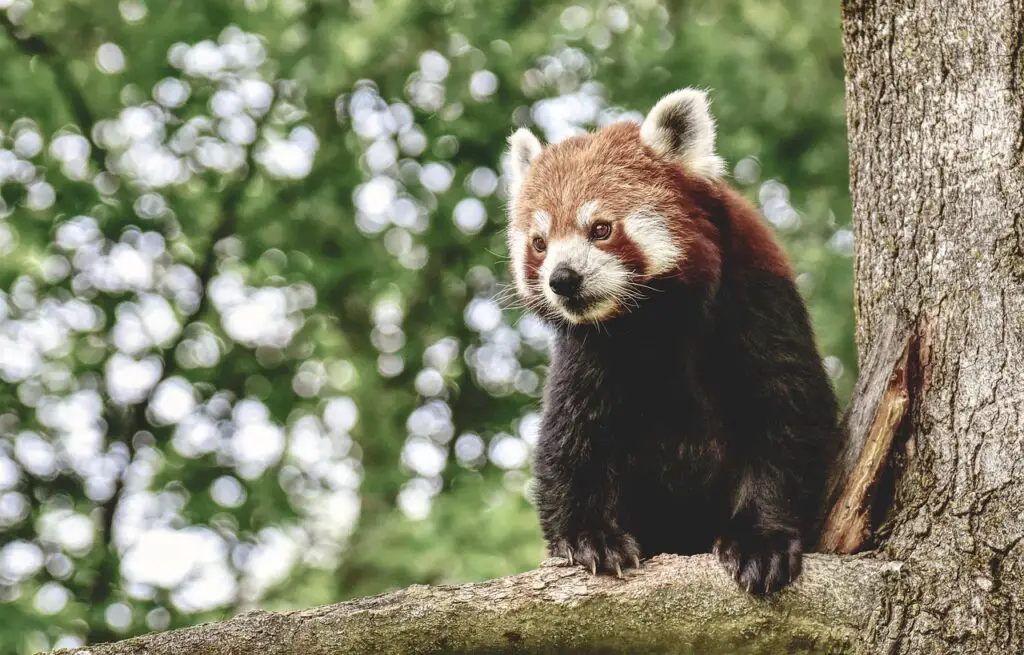The world is brimming with a wide variety of animals, each possessing their own distinct qualities and abilities. Among them, there are those that struggle with their coordination and grace.
From the towering giraffes to the whimsical puffins, these delightful creatures have earned a spot on the prestigious list of the top eight most clumsy animals in the world.
Join us as we delve into the endearing clumsiness of these animals, exploring their challenges and sharing in the humorous moments they provide.
Key Takeaways
- Giraffes have trouble with coordination and often fall over due to their long legs.
- Koalas lack energy and resourcefulness, leading to frequent slipping and falling.
- Giant pandas are known for their clumsiness and often fall over due to their inability to walk properly.
- Ostriches trip and fall frequently due to their long, thin legs and stocky body.
Giraffes
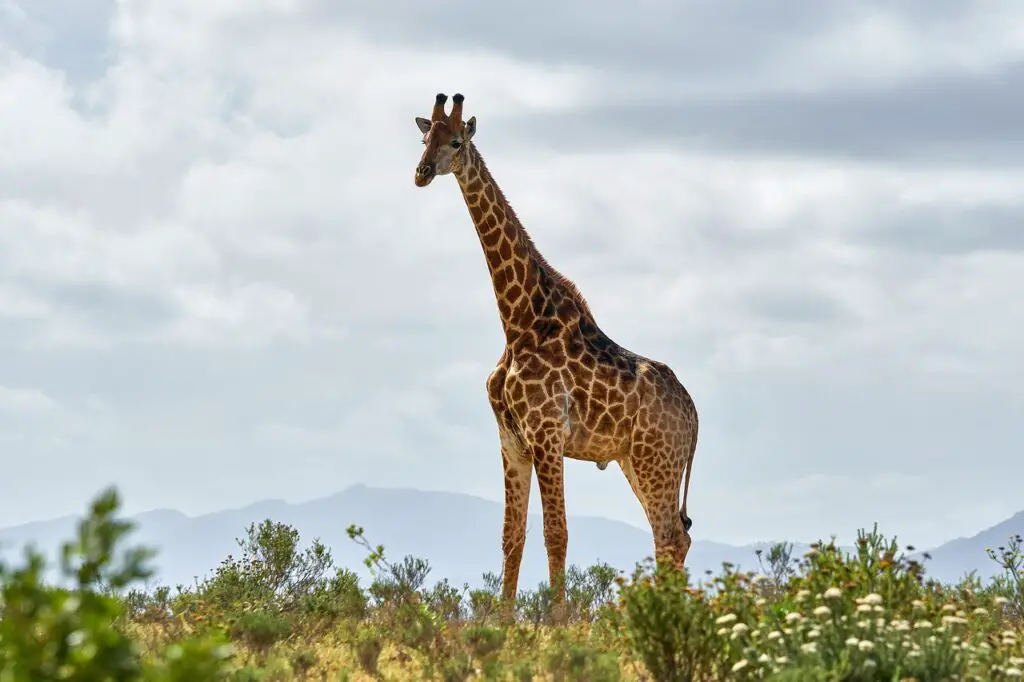
Giraffes often struggle with coordination due to their long legs. But why do giraffes have long legs in the first place? The answer lies in their unique adaptation to their environment.
Giraffes live in grasslands and savannas, where they need to reach high leaves on trees for food. Their long legs enable them to have an extensive reach, allowing them to browse on vegetation that other herbivores can’t access.
However, these long legs pose a challenge when it comes to coordination. To adapt to their coordination challenges, giraffes have developed several strategies.
They’ve a highly flexible neck that allows them to compensate for their long legs by reaching down to the ground without losing balance. Additionally, their musculoskeletal system has evolved to provide stability and support, enabling them to walk and run gracefully despite their long limbs.
Koalas
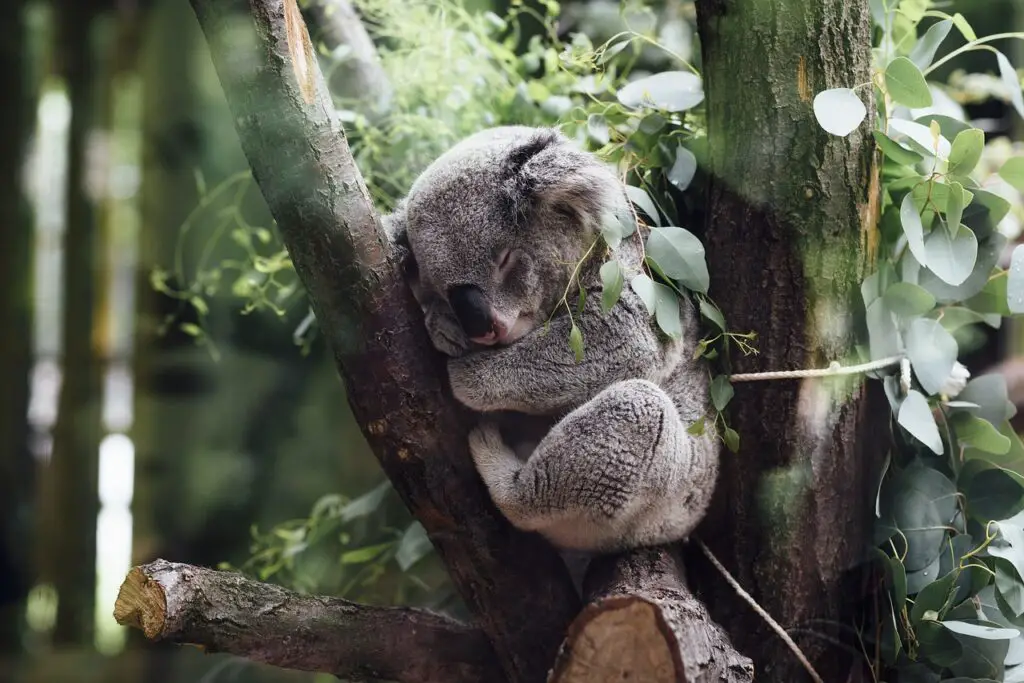
Koalas, with their lack of energy and handiness, are considered one of the clumsiest animals in the world. They spend most of their time sleeping in trees, which requires a certain level of coordination and dexterity that koalas simply do not possess. Compared to other animals on the list, such as giraffes and sloths, koalas have lower energy levels and are less resourceful.
This clumsiness can have an impact on their survival and well-being in their natural habitat. While falls may not hurt koalas, their lack of handiness may make it difficult for them to navigate their environment and find food efficiently. Additionally, their clumsiness can make them more vulnerable to predators. Overall, the lack of energy and handiness in koalas contributes to their reputation as one of the clumsiest animals in the world.
| Animal | Sleeping Habits and Energy Levels | Impact of Clumsiness |
|---|---|---|
| Koalas | Spend most of their time sleeping in trees, lack energy and handiness | Difficulty navigating environment, finding food efficiently, and increased vulnerability to predators |
| Giraffes | Coordination issues due to long legs, uncomfortable positioning when drinking water | Difficulty supporting large body, frequent falls |
| Sloths | Spend most of their lives in trees, struggle to hold on properly | Frequent falls, slow to recover |
| Giant Pandas | Known for laziness, inability to walk properly | Harmful to health and well-being of cubs |
| Red Pandas | Frequently fall down from trees, exhibit playful rolling behavior | Clumsiness despite smaller size |
Giant Pandas
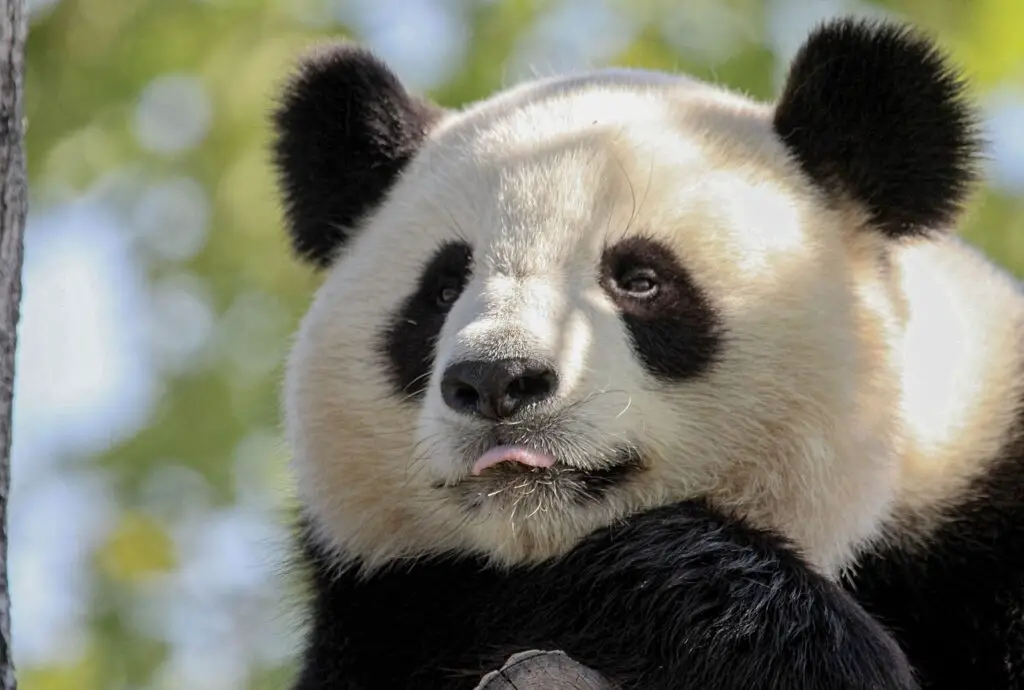
Giant pandas, known for their laziness and inability to walk properly, are among the clumsiest animals in the world. Their clumsiness can be attributed to several factors:
- Physical characteristics: Giant pandas have a unique skeletal structure that contributes to their clumsiness. Their front limbs are shorter than their hind limbs, making it difficult for them to maintain balance and coordination.
- Diet: Pandas primarily eat bamboo, which has low nutritional value. This limited diet can lead to weakness and lack of muscle strength, further exacerbating their clumsiness.
- Habitat: Giant pandas inhabit mountainous regions with rugged terrain. Their natural habitat requires them to navigate steep slopes and uneven surfaces, increasing their chances of stumbling and falling.
The impact of clumsiness on the health and well-being of giant pandas is significant. Frequent falls can cause injuries, including fractures and sprains, which can be detrimental to their mobility and overall physical health.
Additionally, clumsiness may affect their ability to climb trees and escape from predators, further compromising their survival.
Red Pandas
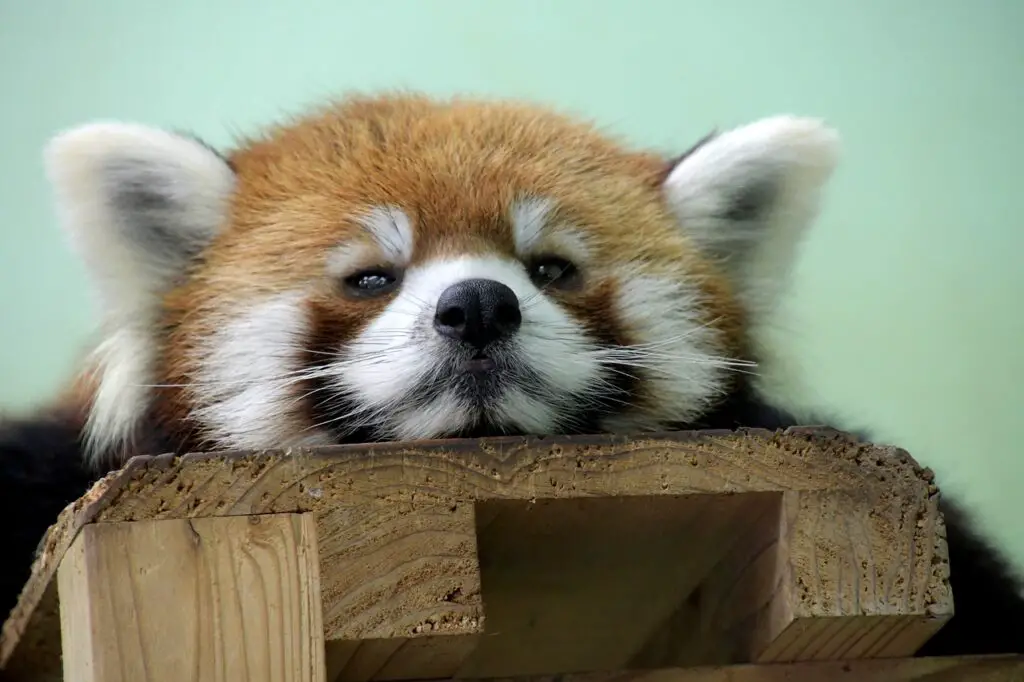
One of the clumsiest animals in the world is the red panda, frequently falling down from trees and exhibiting playful rolling behavior.
Red pandas, despite their smaller size, aren’t spared from being among the clumsiest animals.
This playful rolling behavior may seem adorable, but it can have a significant impact on their survival. The frequent falls can result in injuries or even death, especially when they occur in their natural habitat, where predators lurk.
Additionally, their clumsiness makes it challenging for red pandas to navigate their environment efficiently, affecting their ability to find food and mate.
This clumsiness, combined with habitat loss and poaching, puts red pandas at a higher risk of extinction.
Conservation efforts are crucial to protect these adorable and clumsy creatures and ensure their survival in the wild.
Ostriches
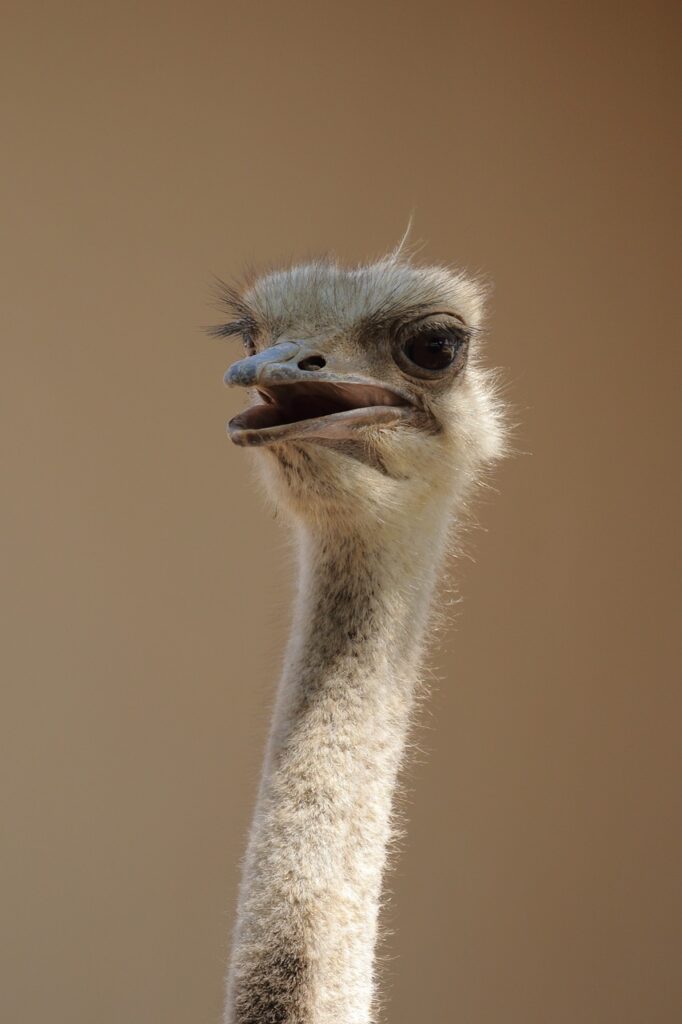
Tripping and falling is a common occurrence for ostriches, hindering their ability to move gracefully. However, these large birds have adapted to their clumsy nature in several ways:
- Flexible neck: Ostriches have a long, flexible neck that allows them to quickly adjust their head position, helping them regain balance after a stumble.
- Powerful legs: Despite their clumsiness, ostriches possess strong, muscular legs that enable them to run at impressive speeds of up to 60 miles per hour. This allows them to escape potential predators in the wild.
- Alertness: Ostriches are extremely alert and have excellent eyesight, which helps them identify potential hazards in their surroundings and avoid tripping or falling.
The impact of ostrich clumsiness on their survival in the wild is relatively minimal. While their falls may be comical, ostriches have developed adaptive mechanisms to compensate for their lack of grace, ensuring their continued survival in their natural habitat.
Sloths
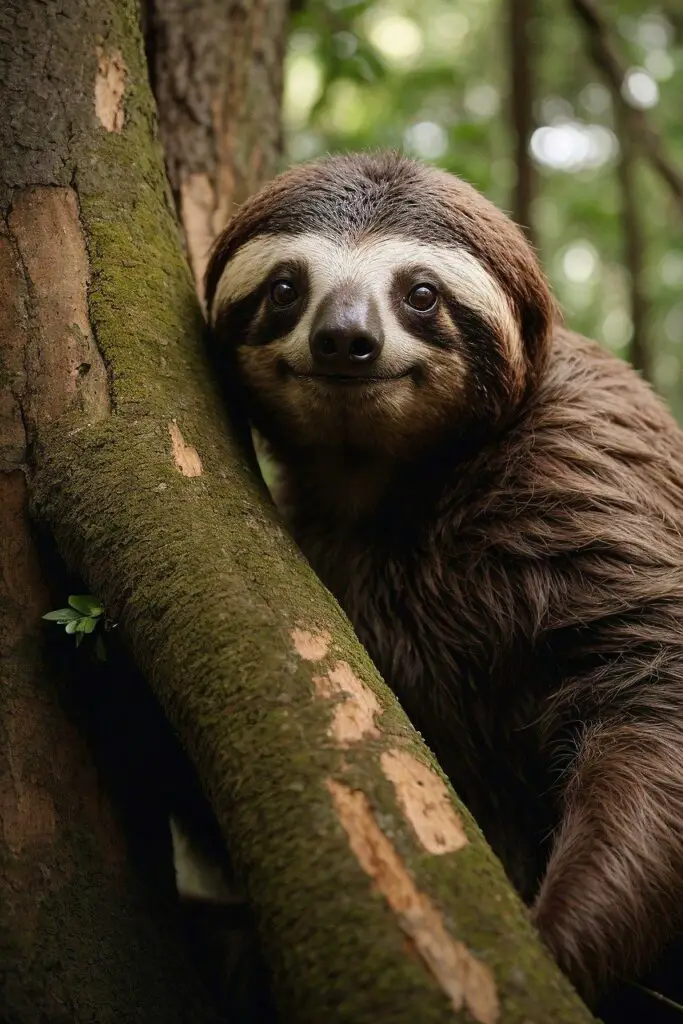
The sloth, known for its slow-moving nature and frequent falls, is considered one of the clumsiest animals in the world. Their tree dwelling lifestyle and lack of dexterity result in frequent falls. Sloths spend most of their lives in trees, relying on their long claws to grip branches. However, their slow movements and lack of coordination often lead to slips and tumbles.
To make matters worse, their slow nature makes it difficult for them to recover quickly after falling. They may take a long time to get back up on their feet, leaving them vulnerable to predators. Despite their clumsiness, sloths have adapted to their environment by developing strong limbs and specialized muscles that allow them to hang from trees for extended periods of time.
| Sloths | ||
|---|---|---|
| Their tree dwelling lifestyle | Lack of dexterity | |
| result in frequent falls | ||
| The slow moving nature of sloths | Difficult to recover quickly | |
| makes it difficult for them | after falling |
Flamingos
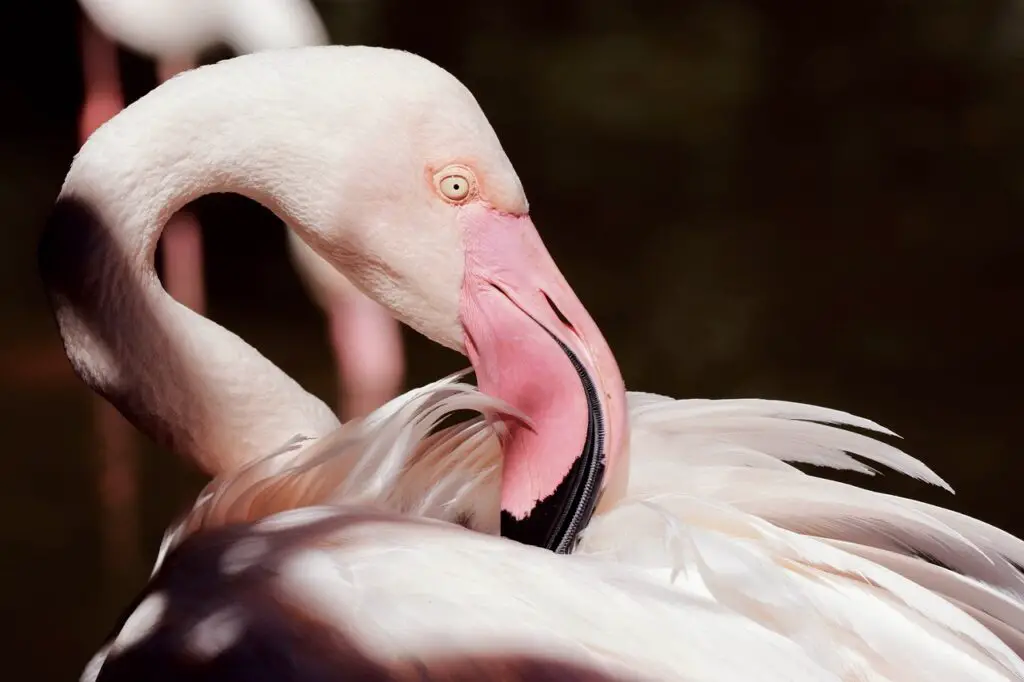
Moving on to the next clumsy animal on our list, flamingos struggle with maintaining balance and often find themselves falling down due to the difficulty of standing on one leg. These elegant birds face several challenges in maintaining their equilibrium, which impacts their daily lives significantly.
- Flamingos: Struggles with Balance: Standing on one leg is a primary challenge for flamingos. The thinness of their legs and the elongated shape of their bodies make it challenging for them to maintain stability.
- Flamingo Adaptations: Overcoming Clumsiness: To cope with their inherent clumsiness, flamingos have unique adaptations. Their webbed feet help distribute their weight and provide stability when wading through water. Additionally, their long necks and flexible spines allow them to adjust their center of gravity, aiding in maintaining balance.
- Environmental Factors: Flamingos’ balance can be further affected by water streams. The force of flowing water can throw off their stability, exacerbating their clumsiness.
Despite these challenges, flamingos have developed remarkable adaptations to navigate their environment more effectively and continue to captivate us with their graceful movements.
Puffins
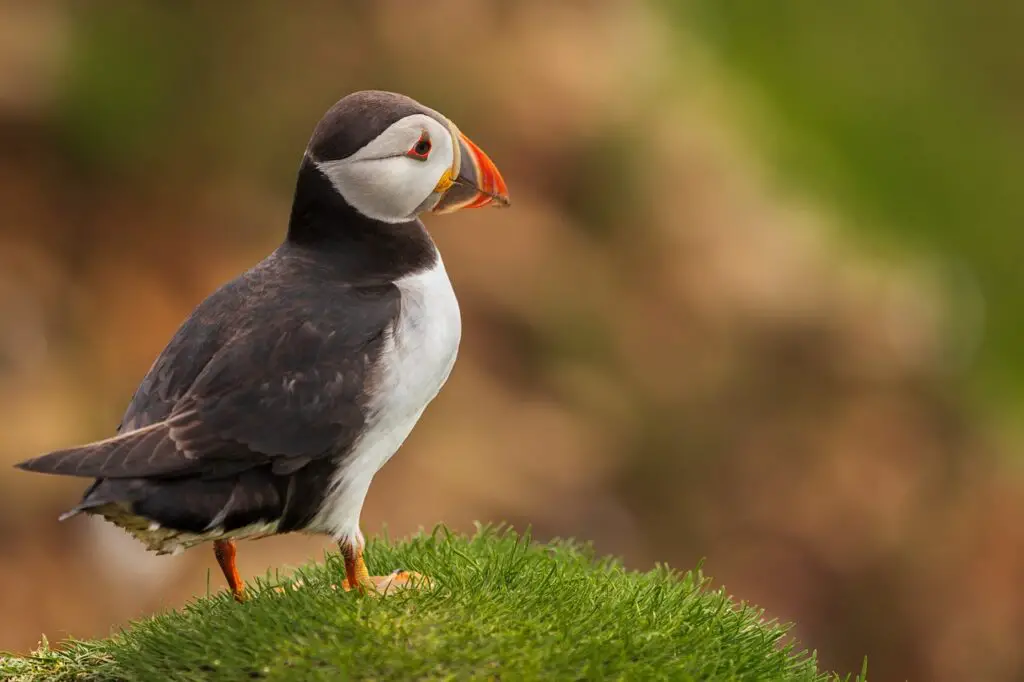
A puffin, known for its distinctive beak and colorful plumage, struggles with maintaining balance and often finds itself falling over due to its poor walking ability. However, puffins possess unique adaptations for flying and swimming that make them exceptional in those areas.
With their streamlined bodies and powerful wings, puffins are capable of flying at high speeds, maneuvering effortlessly through the air. Underwater, their wings transform into efficient flippers, allowing them to dive and swim with great agility. These adaptations enable puffins to catch fish and other prey in their marine habitats.
Conservation efforts are crucial for puffin populations, as they face various threats such as habitat loss, climate change, and overfishing. Organizations and researchers are working to protect puffin breeding colonies, restore nesting habitats, and implement sustainable fishing practices to ensure the survival of these charismatic birds.
Frequently Asked Questions
How Do Giraffes Manage to Drink Water With Their Long Legs?
Giraffes manage to drink water with their long legs through a remarkable adaptation. Despite their difficulty in coordination, they bend their legs and spread them wide to access water, showing their incredible flexibility and adaptation to their environment.
Do Falls Have Any Negative Consequences for Koalas?
Falls do not have negative consequences for koalas. Despite being considered one of the clumsiest animals, koalas have adapted to their tree-dwelling lifestyle. Their falls are typically harmless due to their low energy levels and cushioned fur.
What Are the Health Implications of Giant Pandas’ Clumsiness?
The clumsiness of giant pandas can lead to health risks. Their balance issues make them prone to falling, which can result in injuries. This behavior may also impact the well-being of their cubs.
Why Do Red Pandas Exhibit Playful Rolling Behavior?
Red pandas exhibit playful rolling behavior as a means of communication and social bonding. It is believed to have evolutionary advantages such as strengthening social ties within their group and promoting physical coordination and agility.
How Do Ostriches React to Being Laughed at for Their Clumsiness?
Ostriches may react negatively to being laughed at for their clumsiness as they are aggressive birds. Their physical adaptation for clumsiness includes long, thin legs and a stocky body that make them prone to tripping and falling.

Erzsebet Frey (Eli Frey) is an ecologist and online entrepreneur with a Master of Science in Ecology from the University of Belgrade. Originally from Serbia, she has lived in Sri Lanka since 2017. Eli has worked internationally in countries like Oman, Brazil, Germany, and Sri Lanka. In 2018, she expanded into SEO and blogging, completing courses from UC Davis and Edinburgh. Eli has founded multiple websites focused on biology, ecology, environmental science, sustainable and simple living, and outdoor activities. She enjoys creating nature and simple living videos on YouTube and participates in speleology, diving, and hiking.

